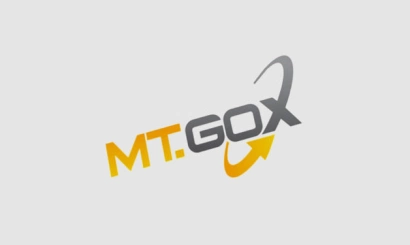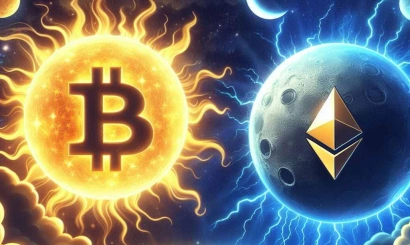After the Merger. Analysis of popular tokens among former Ethereum miners
After the transition of the largest-capitalized altcoin to the PoS algorithm, many miners were forced to look for other coins to continue using their equipment. Let's look at the main alternatives
On September 15, the Ethereum network received an update to The Merge, which moved the altcoin from Proof-of-Work (PoW) to Proof-of-Stake (PoS). The blockchain is no longer secured by miners, but by the validators that support the network's nodes.
Many miners were forced to look for other projects. In addition to dropped profits, many ideologically minded miners were also frustrated by the need to move to other networks, as they considered themselves an important part of the ether ecosystem and had been involved in supporting the network for years.
Ethereum Classic - have you ever used a dApp on the ETC network?
Although the Ethereum Classic network has been around longer than most of today's Coinmarketcap top 100 coin projects, unfortunately no popular apps have ever appeared on the ETC blockchain. Only the most staunch supporters of the network, or blockchain enthusiasts who like to test a variety of software, would answer the subheading question affirmatively. However, with increased attention to the asset, this may change.
What awaits the ETC ecosystem with the arrival of new miners? Since the end of July, the network's hash rate has been growing smoothly, switching to parabolic growth as Ethereum's PoW shutdown approaches. Since mid-summer, the ETC hash rate has grown nearly tenfold and is around 200 TH/s as of September 20.
Ethereum Classic was the first and "lying on the surface" candidate to switch equipment to ether miners, but in the first 24 hours after The Merge many miners, who switched to ETC, saw their earnings drop several times compared to the previous ETH network payouts. As a result, jumping to 300 TH/s on the first day, the hash rate also fell quickly by 30% in the next days - the high complexity of the network didn't please new miners.
In terms of technical analysis, the coin looks fairly confident - the ETC price largely correlated with the increase in hashrate, up more than 140% since the mid-summer peak. The significant support level of $28 per ETC, which has been tested many times in the past on corrections, has not yet been broken, despite difficult market conditions in late summer and early fall.
Ravencoin - a more decentralized bitcoin with tokens?
Ravencoin is a fork of bitcoin RVN and uses a modified KAWPOW consensus algorithm that provides a more decentralized network. The ecosystem's projects are pleasingly diverse, ranging from high-tech Atomic Swaps to a variety of NFT conceivings. Unlike the obvious ETC, miners didn't start moving to RVN even before Ethereum's PoW shutdown - hashrate has been flat all summer. Since early September, the complexity of the network began to climb, increasing almost 10-fold to values of 20 TH/s and making a parabolic jump on September 15. Just as in the case of ETC, miners "cooled" to RVN in the first days after The Merge, which led to a decrease in hashrate by 20-25% to the current rates in the range of 15-17 TH/s.
The technical analysis of RavenCoin is more impressive - 160% growth in the peak since the beginning of September and record trading volumes in the history of the asset. The correction that began immediately after the ether merger created a strong downward momentum by breaking through the important psychological support level of $0.05. Now the bears are trying to take the next support level around $0.04. This level is extremely important because this is where the catastrophic and prolonged decline in the price of the asset was stopped in June 2021 during an extremely bearish market sentiment.
Firo - support the right to anonymity?
The increased complexity of RVN and even more so of ETC could not be to the liking of many miners, leading to the search for smaller alternatives. One of such projects is Firo - rebranding of anonymous Zcoin coin with a modified PoW algorithm - FiroPow, paying special attention to protection from excessive centralization, use of ASIC and making mining more democratic for ordinary users. Apart from the financial benefit, anonymous coin mining is supported by many ideologically minded miners and is then understood as an important contribution to the secure future of projects aimed at increasing the privacy of transactions in the world.
The coin's hashrate practically did not change until the very last days of the PoW shutdown in the etherium network. The sharp increase in complexity, which started on September 14, unlike the other two examples above, did not fall on the first day after The Merge and continues to grow until now, already exceeding 500 Gh/s (on September 1 the hash rate was at 50Gh/s).
Along with the increasing complexity of the network, the value of the asset has also been growing since the beginning of September - it has risen by more than 105% at its peak since the first of September. Nevertheless, the correction from September 15, which is typical of all the described coins, returned FIRO to the lower area of the range from which the asset tried to break through to higher values in the second half of the summer. A lot of daily candlestick wicks then "extinguished" at the values of $3.1-3.2 per coin, and now this level should be broken upwards again. In favor of the possibility of further growth of FIRO from the current rates, however, says the chart of the coin to BTC, according to which the asset is still above the level of 0.0001400 BTC, which held the price earlier.
ETHW - I'm staying!
Some miners didn't look for alternatives and simply continued to support Ethereum's PoW network, which has now become a standalone ETHW asset. The altcoin's hash rate is at a high level of about 30 Th/s, which is indicative of the large number of participants in the process.
Users can already add ETHW to their Metamask extensions, which will immediately display a balance that matches the balance of ETH on the main network at the time of the move to PoS. The future of ETHW is uncertain, but due to its small capitalization (2500+ according to Coinmarketcap), the asset is likely to experience high volatility, which usually attracts the attention of the cryptocommunity. Coin trading is already supported by major exchanges such as FTX, OKX, Bitfinex and others, and trading volumes are growing.




_410x245_00e.webp)


